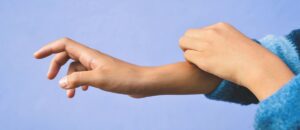The term scoliosis is derived from the Greek word 'skolios', which means curved or crooked. It is a medical condition that results in an abnormal curvature of the spine, which can cause discomfort, pain, and other complications. As a school nurse, being aware of scoliosis and understanding how to support students with this condition is essential.
What is Scoliosis?
Scoliosis is a medical condition that affects the spine's shape, causing it to curve sideways. While some degree of curvature is normal, scoliosis is diagnosed when the curvature exceeds 10 degrees. Every year in the United States, 100,000 kids between the ages of 10 and 15 are diagnosed with adolescent idiopathic scoliosis (AIS), the most common type of scoliosis. While the term "idiopathic" refers to no identifiable causes for the condition, it is worth noting that approximately 30% of AIS patients have some family history of scoliosis, indicating some level of genetic connection. The prevalence of AIS is greater in females than males, and females are also at a much greater risk for serious curve progression.
Depending on the degree of curvature, treatment options may include close monitoring (wait and watch), bracing, and, in severe cases, surgery. Early intervention improves long-term outcomes, and if left untreated, scoliosis can cause the deformity to worsen, leading to a variety of complications such as back pain, adverse psychological effects, cosmetic concerns, nerve damage, and even cardiac and pulmonary restrictions.
How Can School Nurses Support Students with Scoliosis?
- Screening - The evidence around school-based posture screenings is inconclusive, but according to the American Academy of Orthopaedic Surgeons (AAOS), Scoliosis Research Society (SRS), Pediatric Orthopaedic Society of North America (POSNA), and the American Academy of Pediatrics (AAP), scoliosis screening programs can be an effective way to identify signs of the condition and refer individuals for necessary medical care. Some, but not all, states mandate and provide regulatory guidance for scoliosis screenings in schools. Screening tools include the Adams Forward Bend Test or a scoliometer to check for signs of scoliosis.
- Education - If applicable, clear communication to parents and students about the importance of early diagnosis and treatment is key to a successful posture screening program. In the case of a student with a scoliosis diagnosis, support and reassurance that most children and teenagers diagnosed with scoliosis can still lead normal, active lives can be invaluable throughout their treatment. Encourage open communication and offer resources such as support groups or counseling services.
- Accommodations - Creating a supportive environment can help students feel more comfortable and accepted, and students may benefit from a 504 Plan. Accommodations for students with scoliosis vary depending on the severity of their illness, comorbid conditions, and specific treatment plans. These needs and accommodations are subject to change over time based on complications, response to treatment, or other health factors affecting the student. Classroom accommodations may include using a unique chair or desk, reducing workload, and issuing additional textbooks. Students may also require frequent breaks, PE modifications, elevator access, extra time between classes, or a place to adjust or remove their brace.
Scoliosis can be challenging, and students may face physical and emotional struggles. Early intervention and treatment can improve long-term outcomes, and school nurses play a critical role beyond posture screenings. By working together with parents, school staff, and outside providers, students with scoliosis can thrive both in and out of the classroom.





